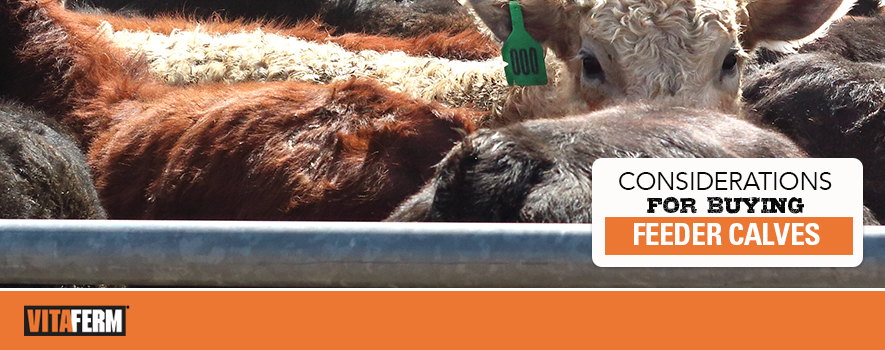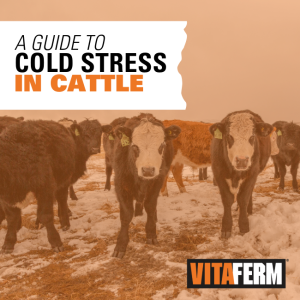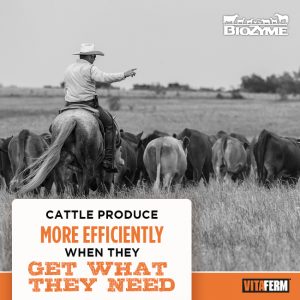
Health. Source. Genetics. Size. Condition. All of these are factors that cattle buyers should take into account when buying their next load of calves to background on grass or put into a feedlot.
A healthy calf is going to eat and grow more efficiently so health is of the utmost importance. Be sure to know about the overall health and nutrition program of the operation where the calves are coming from.
“It helps if you can ascertain that the calves have been weaned and that the last preventative vaccine was given at least 30 days before you plan to take possession. This will aid in fewer sick calves and get them off to a better start,” said Gary Fike, Director of Commercial Marketing for the Red Angus Association of America. He encourages the backgrounder to implant the calves to help with gains, but regardless if they are implanted or grow naturally, a good nutrition program is vital.
“A higher dose implant on cattle consuming low quality forage or a low energy ration results in a poorer return on investment,” he said.
Information is powerful, and that is where the source and genetics of the calves you are going to buy play an important role in their future outcome. Fike strongly encourages those looking for calves to consider buying those that are already identified in a breed-specific program like AngusSource®, the Red Angus Feeder Calf Certification Program (FCCP) or Allied Access. Knowing a little bit about the calves genetics and source can help predict their outcome through the feedlot.
“The FCCP tag program is a 99-cent investment that typically returns more than $20 per calf,” Fike said of the program that documents 50-percent Red Angus genetics, ranch of origin and group age.
And if buying calves enrolled in a program isn’t feasible, keeping them uniform in type is still vital. Keep them the same size, weight and color to maximize efficiencies.
“If you really want to succeed it is best to start with similar genetics,” Fike said. “It helps from the standpoint of having uniformity throughout the remainder of their lives and will result in fewer ‘sorts’ down the road; either when sold again or placed in a feedlot.”
Two more important factors that cattle buyers should consider are size and condition. Fleshy, over-conditioned calves generally convert more poorly, and generally are less efficient in their gains later on. Calves that are thin and “green” are those mostly sought after to get the biggest kick in terms of compensatory gains later on. They will be more expensive, on a per pound basis than fleshy calves, but will also gain more rapidly and be more efficient.
Another consideration for buying stockers is location. Transportation costs for calves bought in a different geographic region will cut into your profit.
Finally, once you have your stockers purchased, don’t forget their nutritional needs. Lighter weight calves will thrive on higher quality forages, where heavier calves can perform on slightly lower quality grasses. Either way, it is vital to provide a proper mineral and protein supplementation program to ensure the calves get the right balance of protein and minerals to convert the forages to energy.
This is where the VitaFerm® Gain Smart® Stocker Program plays an important role in giving your calves the jumpstart they need to eating and staying healthy. It includes two products to increase appetite and a line of vitamin and mineral supplements with the Amaferm® advantage that promotes health and economically produces pounds by maximizing the natural energy and protein available in forage.
The initial step in the VitaFerm Gain Smart Program happens on the first day the calf is processed when being received by a feeder. Use the Vita Charge® Cattle Drench on that first day to help make sure calves get to the bunk and want to eat and drink readily early on.
Next, introduce the Vita Charge Stress Tub to the calves for 2-3 weeks after they are first received. The tub will promote feed and water intake, increase digestibility to maximize the energy value of the feed for more gains, and contains MOS, which helps trap bad bacteria limiting their ability to harm the animals.
The final step in the VitaFerm Gain Smart Program is the introduction of one of the mineral options available. The mineral can be introduced to the calves immediately. It works hand-in-hand with the Stress Tub that can be removed once the calves have a healthy eating routine established.
There are three mineral options: VitaFerm Gain Smart Stocker (also available in VitaFerm Gain Smart Stocker HEAT), VitaFerm Gain Smart Wheat and VitaFerm Gain Smart Balancer RU1600. All three minerals are designed to balance basic nutrient needs for maximum efficiency. VitaFerm Gain Smart Stocker is designed for those who are feeding a medium to high forage diet, and works well for both cool- and warm-season grasses. It is the most versatile of the three, and can be fed in multiple places under multiple conditions.
The return on investment in feeding the VitaFerm Gain Smart Program will be in the Amaferm advantage. Research has shown that during an 84-day growing period that Amaferm has increased feed efficiency by 6-percent.
As with any program, feeders and stockers to consult with their veterinarian and nutritionist to make sure their calves are on the best protocol to grow and add value. A VitaFerm Gain Smart supplement in their diets will help build immunity, keep your calves healthy and keep them growing.


